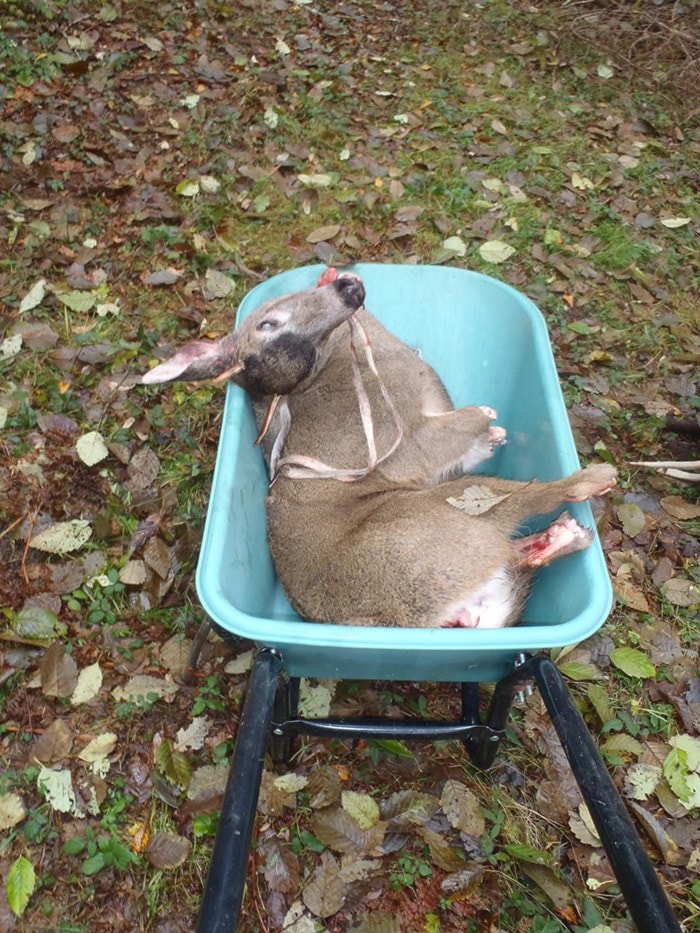Hunting season officially started in August and depending on the species of wildlife you hunt it can extend well into 2016. But for most people it comes to an end in mid-December, 2015.
Exceptions to the regular seasons are spring bear hunts and extended seasons on Canada geese. For the vast majority of hunters it is primarily about trying to harvest some high-quality organic meat for the family deep freeze.
Vancouver Island's most important big game animal is the Columbian Black-tailed deer which is common throughout the Island. The picture of the deer is one that was harvested east of Highway19 in the shotgun or archery only area. They are not large animals; but their meat is excellent venison.
Over time they have learned that urban areas like the lower end of Vancouver Island is a relatively safe place from cougars and wolves and it also has abundant sources of food in the form of urban plants and large commercial gardens that grow delicious crops of vegetables, flowers and other edible plants.
They have also discovered similar qualities in the Comox Valley. This leads to problems for those who grow the plants and for those who would convert the deer into locally grown meat. I have no ready solution for the urban deer problem, but I personally believe that responsible hunters could do a better job of reducing urban deer numbers than the frightening costs reported in the recent cull in the metropolitan area at the south end of the Island.
Canada geese are another source of locally grown meat that is falling out of favour with many people on the Island due to the unpleasant habit of spreading goose poop on golf courses, beaches and parks. I also suggest that carefully controlled hunting could do much to solve the Canada goose problem.
This column commends the Ministry of Environment for the expanded shooting areas outlined on page 27 of the Region 1 Regulations. We also have a limited population of Roosevelt Elk on the Island and a large population of black bears. Black bears that feed on berries, fruit and plants are a good source of meat; but when they eat salmon from the spawning runs the meat is not very palatable.
There are large numbers of deer living in the agricultural areas of the Island and if you ask permission from the landowner you may get permission to hunt around some of the farms. It is only courteous to let the landowner know what you plan to do before you go on their land. You will find it helpful and it can lead to some excellent hunting opportunities as the season progresses.
Wildlife populations rise and fall based on the ecological conditions that may favour their lifestyles or be detrimental to them. The climate change we are currently experiencing is changing ecological systems upon which wildlife exist.
A classic example of positive changes in our coastal estuaries for birds such as Canada geese is contributing to their current success throughout coastal British Columbia. There are also negatives with this situation because the geese are putting much pressure on eel grass beds that are important to small fish – as always there are winners and losers in the ongoing struggles to live in the natural world.
My next column will be based on hunting in the Kamloops area. The plan is to hunt an area I used to hunt about 40 years ago. We are told there is a changing mix of large animals and forest growth in the area due to changing ecological conditions brought on by changing climate.
Hunting, like fishing, is an activity that brings participants into direct contact with the world of nature. Nature is a great teacher.
Ralph Shaw is a master fly fisherman who was awarded the Order of Canada in 1984 for his conservation efforts. In 20 years of writing a column in the Comox Valley Record it has won several awards.
